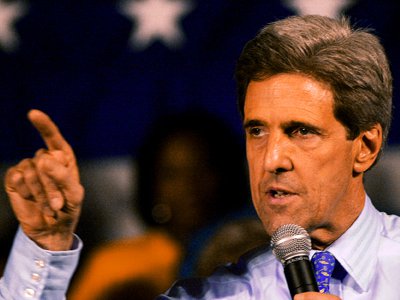The Number One Cabinet Position
It's time to restore the seniority of America's top diplomatic position.
 Time was when the position of secretary of state was regarded as so important in the American political scheme of things that it was the best stepping-stone to the presidency. The third, fourth, fifth, and sixth presidents of the United States had all been secretaries of state, with the last three of them moving directly from that job to the White House. When the last one in that series, John Quincy Adams, became president, the job that he gave to the presidential aspirant—Henry Clay—whose eventual support was critical in Adams winning the confusing election of 1824 was that of secretary of state.
Time was when the position of secretary of state was regarded as so important in the American political scheme of things that it was the best stepping-stone to the presidency. The third, fourth, fifth, and sixth presidents of the United States had all been secretaries of state, with the last three of them moving directly from that job to the White House. When the last one in that series, John Quincy Adams, became president, the job that he gave to the presidential aspirant—Henry Clay—whose eventual support was critical in Adams winning the confusing election of 1824 was that of secretary of state.
Having such high political significance attached to this particular cabinet position was mainly a feature of the early decades of the republic. The only other secretaries of state who would later ascend to the presidency were Martin Van Buren (who besides being secretary of state under Andrew Jackson—the man who would defeat Adams in 1828—was also his political manager, second vice president, and successor) and James Buchanan (who was secretary under James Polk in the 1840s). That pattern ended not so much because the job of secretary of state changed but rather because the process and politics of presidential selection changed. Jackson's defeat of Adams marked the beginning of an era of modern politicking in which simple themes with popular resonance beat out brilliance and accomplishment, especially accomplishment in foreign affairs.
Perhaps the job of secretary of state is nonetheless in the process of regaining a bit of its old political standing. John Kerry, whose confirmation as secretary of state seems highly likely, will never become president but has already been the presidential nominee of one of the two major parties. He has the most national and international political stature of anyone who was seriously considered to succeed Hillary Clinton. Clinton herself came close to being a national presidential nominee and is now one of the first names mentioned in the early betting on the election of 2016. Go back two predecessors before Clinton and you have Colin Powell, who would have made an excellent president and certainly was frequently mentioned as such, although he probably recognized that he did not have the traits of a good presidential candidate—which, unfortunately for us, are not the same as the traits of a good president. Three of the last four secretaries of state being presidential timber may be enough to be called a new pattern.
People who will support Kerry's nomination will have various reasons for doing so, including the Republicans who want to get Scott Brown back in the Senate. And of course there will be widely varying opinions about the policies he will initiate and execute as secretary. But the restoration of some of the political standing of the position of secretary of state has at least three advantages.
One, it tells the rest of the world that the United States considers its relations with the rest of the world to be important.
Two, it tells the American people that relations with the rest of the world are important.
Three, with the person in the highest councils of government having responsibility for foreign relations being someone of political stature and clout, this increases the chance that the foreign implications and repercussions of everything the United States does will be sufficiently taken into account before it does them. There is no guarantee this will happen—we should remember Powell's sad relationship with the White House during the George W. Bush administration—but the chance is greater than it otherwise would be. And this is important because U.S. interests are affected in significant ways by foreign repercussions and reactions to many things the United States does that are not ostensibly part of foreign policy, from homeland security measures to presidential speeches intended for domestic audiences.
Image: Wikimedia Commons/Thomas True.
